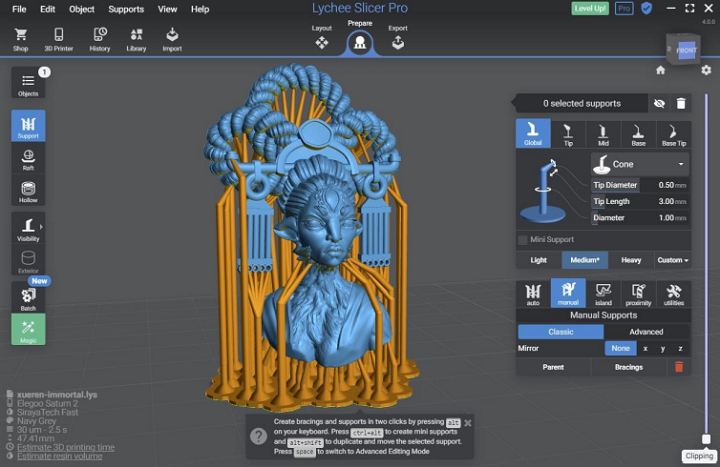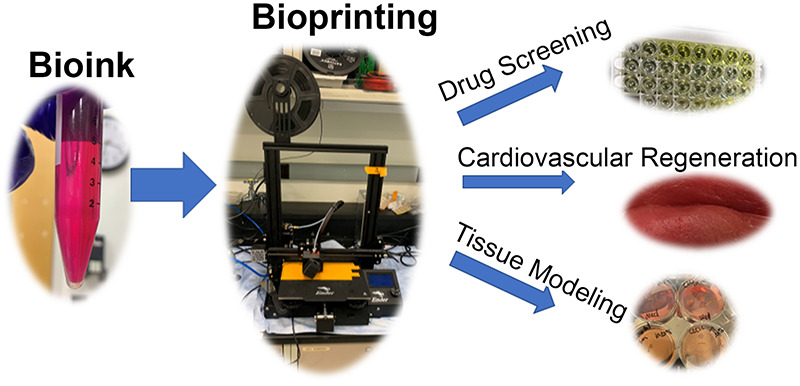In today’s 3D Printing News Briefs, a proposed standard from ASTM International would define filament properties. Mango 3D announced a major update for its Lychee slicer. Finally, on to research, first focused on 3D printing technology that could advance biofilm science, and then on bioprinting stem cells for cardiovascular regeneration.
ASTM Developing Standard for 3D Printing Filament Properties
A new standard is being developed by ASTM International that would be used for testing the tensile properties of filaments. The proposed standard is being written by the organization’s additive manufacturing technologies F42 committee, and will be used to determine the basic performance information on, and define properties for, the raw materials used in the most common material extrusion 3D printers on the market.
ASTM International member Haibin Ning is leading the development effort for this proposed standard, and said that it “can help users from labs to industries, especially aviation, aerospace, automotive, and defense, to select the filament that meets their requirements. It can also facilitate quality control and optimization of filament production for the manufacturers.” These efforts are specifically related to Sustainable Development Goals #9 and #12 on innovation and responsible consumption and production laid down by the United Nations.
Lychee Slicer Releases New Features & User Interface
Mango 3D offers a customizable operating system to manage 3D printing hardware, and announced that its 3D model preparation software, Lychee Slicer, has released an updated user interface for future projects, as well as some major new features and a more dynamic logo. The user interface has a cleaner look, and is also more intuitive, in order to make print preparation quick and easy, and the new features were created to help reduce print errors related to model size and facilitate the transition from virtual to real. Users can see the exact size of their future completed print using the new Physical Size Mode, and another new feature is Support Painting, which speeds up the creation of manual supports.
“The confirmed success of Lychee Slicer among users, with over 11 million slices generated, confirms our vision of 3D printing. This is a strong motivation for the development of our future projects,” said Thomas Roussel, the CEO of Mango 3D. “We are aware of the limitations and constraints of 3D printing, as we are passionate about 3D printing. We want to make this process accessible to as many people as possible. The democratization of 3D printers and the ever-growing communities are a big challenge in this path of simplification. Still, we will do everything we can to meet it.”
MSU Researchers Advancing Biofilm Science with 3D Printing

MSU microbiology doctoral student Kathryn Zimlich, left, and Isaak Thornton, doctorate student in mechanical engineering, with a 3D printing device they have used to deposit microbes and create biofilms. Credit: MSU Photo by Adrian Sanchez-Gonzalez
Biofilms—the slimy mats created when bacteria and various other microbes stick to surfaces—form complex communities that usually aren’t affected by normal disinfectants. But scientists in Montana State University’s Center for Biofilm Engineering are designing a 3D printing system for replicating these communities so they can be studied, and new treatments found. MSU doctoral students Isaak Thornton, mechanical engineering, and Kathryn Zimlich, microbiology, have been testing their system, which can lay out a precise grid of individual bacteria in hydrogel and then solidify the material using laser light, creating what’s described as a “rudimentary” biofilm. The 3D printer will allow them to do multiple passes with different strains and species of bacteria, which then enables the creation of more complex, layered biofilms. Fluorescent dye added to the bacteria makes it easy for researchers to see the microbes inside using special microscopes, so they can better study cell interactions and develop treatments in a controlled setting.
Zimlich said, “One thing that’s becoming clearer is that there’s potential to treat these pathogenic bacteria by altering the interactive biofilm environment instead of trying to use harsh chemical products.
“We think it’s possible to construct analogs of how these pathogenic biofilms form naturally.”
Thornton and Zimlich presented their work during the recent Montana Biofilm Meeting, which invites global researchers and industry partners to discuss biofilm science.
Bioprinting & Tissue Engineering For Cardiovascular Tissue Regeneration
Finally, researchers from Stanford University, Graver Technologies in New Jersey, and the Center for Tissue Regeneration, Veterans Affairs Palo Alto Health Care System published a review article titled “Advances in three-dimensional bioprinted stem cell-based tissue engineering for cardiovascular regeneration.” 3D bioprinting produces tissues that mimic the function and structure of real tissues, such as cardiovascular ones. Because bioprinted tissues can, as the team explained, “better recapitulate in vivo physiology,” they can be used in many applications, such as disease modeling, drug testing and screening, in vitro cellular studies, regenerative medicine, and biocompatibility analysis. But, the matrix molecules in bioprinted tissues can’t quite recreate the complexity of cellular morphologies and the extracellular matrix; however, it helps to include a vascular network, as well as patterned 3D bioprinted tissues. The researchers go more in depth into recent 3D bioprinting advances, applications, challenges, and perspectives in their article.
“In this review, we summarize the new generation of 3D bioprinting techniques, the kinds of bioinks and printing materials employed for 3D bioprinting, along with the current state-of-the-art in engineered cardiovascular tissue models. We also highlight the translational applications of 3D bioprinting in engineering the myocardium cardiac valves, and vascular grafts. Finally, we discuss current challenges and perspectives of designing effective 3D bioprinted constructs with native vasculature, architecture and functionality for clinical translation and cardiovascular regeneration.”
Subscribe to Our Email Newsletter
Stay up-to-date on all the latest news from the 3D printing industry and receive information and offers from third party vendors.
You May Also Like
AM Under Trump, First Thoughts: Reshoring
Constrained resources and the need to fight climate change have led to a new era of manufacturing focused on re- and nearshoring paired with supply chain resilience. In the battle...
Dyndrite Forms Strategic Partnership with Nikon SLM Solutions for Metal 3D Printing
Dyndrite, the Seattle-based software provider specializing in solutions for digital manufacturing technologies, has announced a strategic partnership with Nikon SLM Solutions to integrate Dyndrite’s LPBF Pro software with Nikon’s metal...
Nikon SLM Hits 1000th 3D Printer Milestone with Bosch Purchase
Nikon SLM Solutions has reached a significant milestone with the production of its 1000th NXG XII 600 system, among the most productive metal additive manufacturing (AM) systems in the industry....
Themes from AM Investment Strategies: Collaboration, Cost Challenges, and Expanding Markets
The 2024 Additive Manufacturing (AM) Investment Strategies event went off without a hitch. The online roundtable, hosted by AM Research (AMR) and Cantor Fitzgerald, dug into the latest trends and...







































